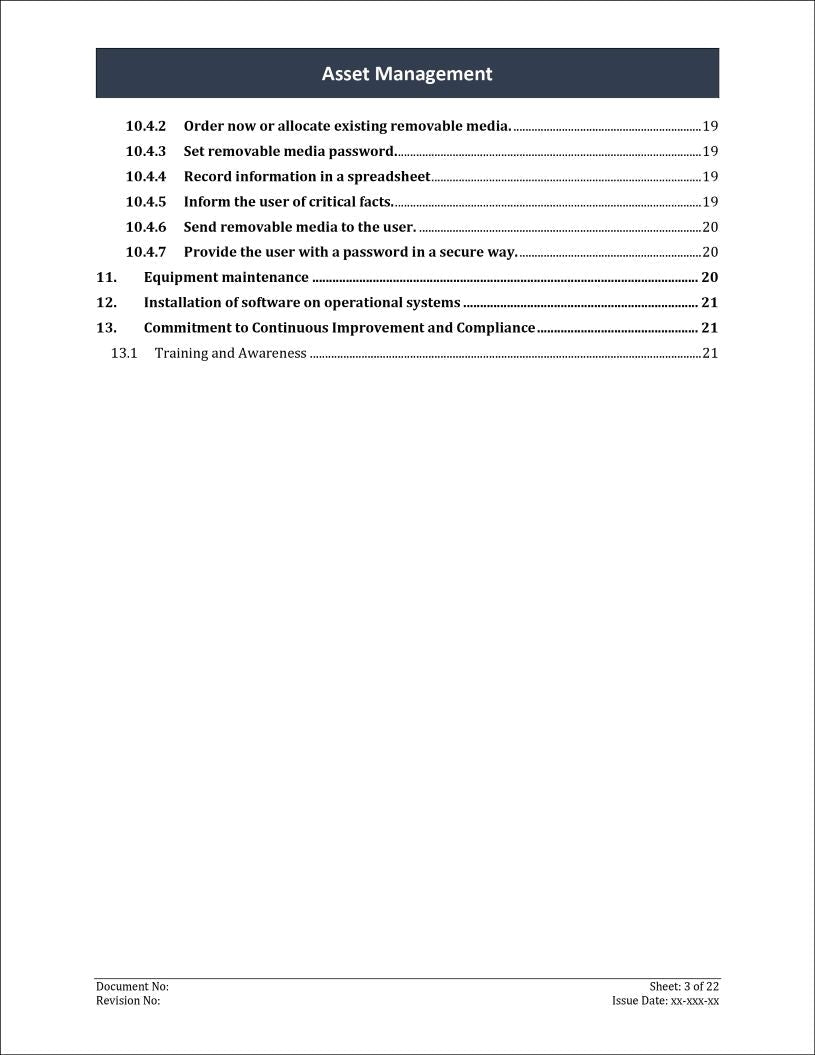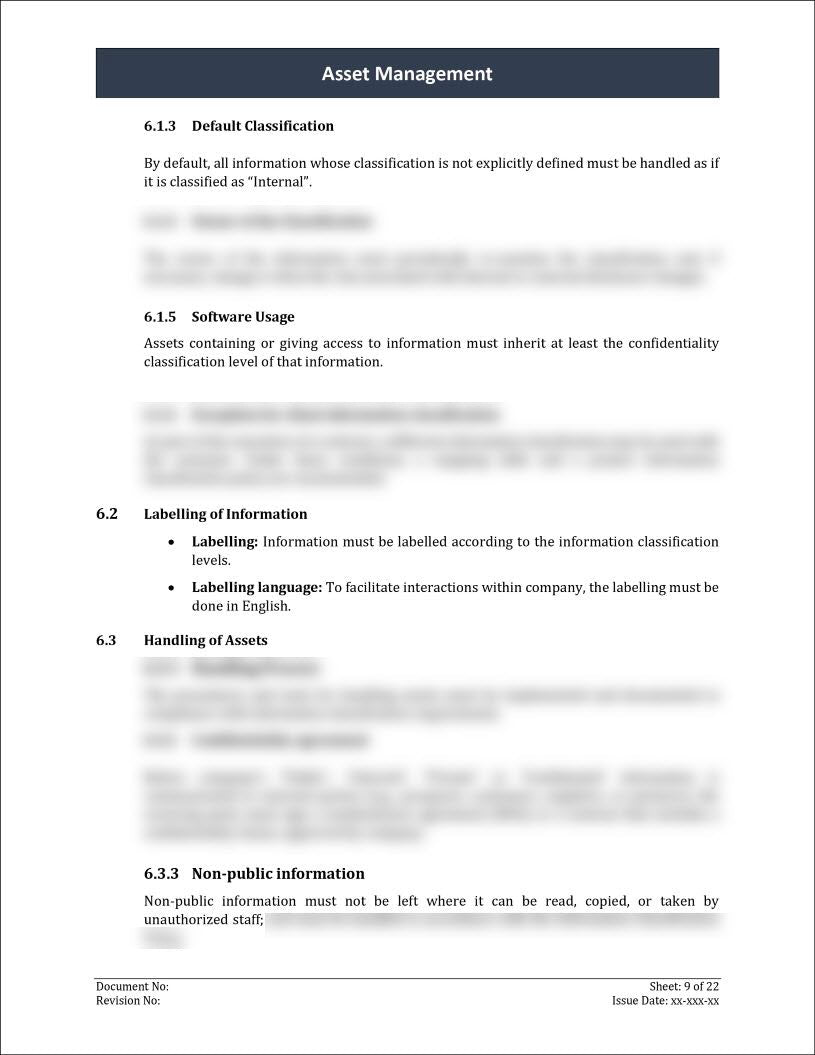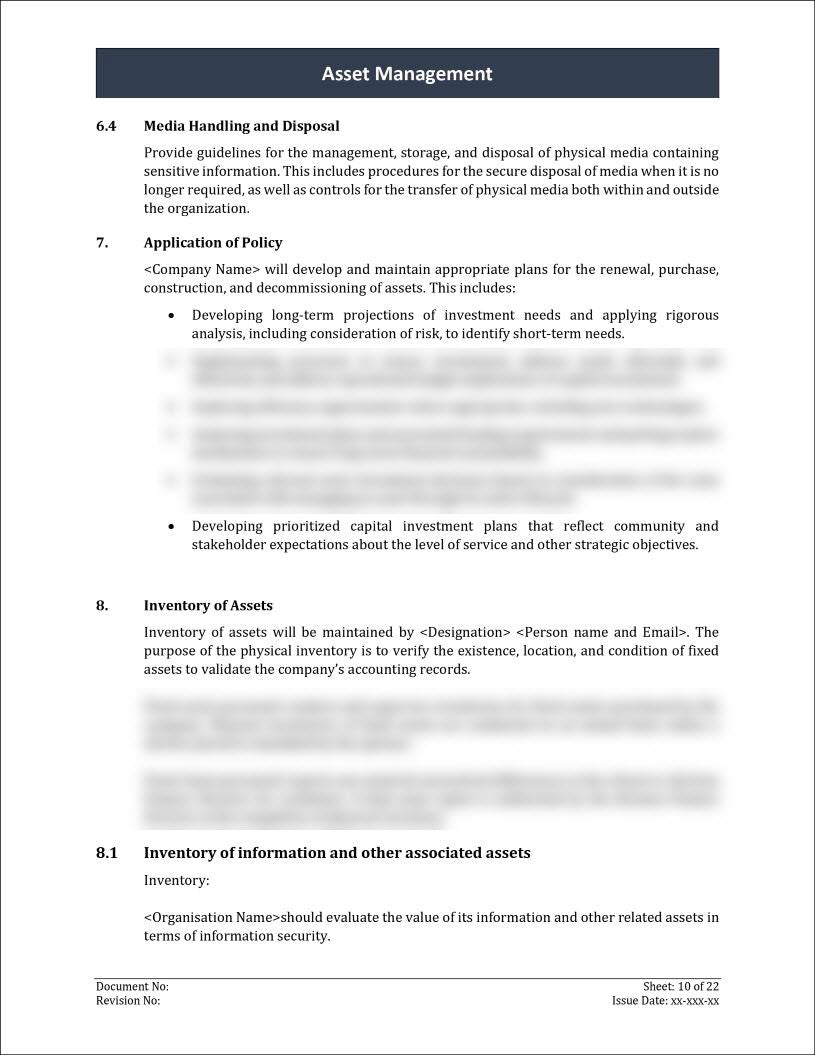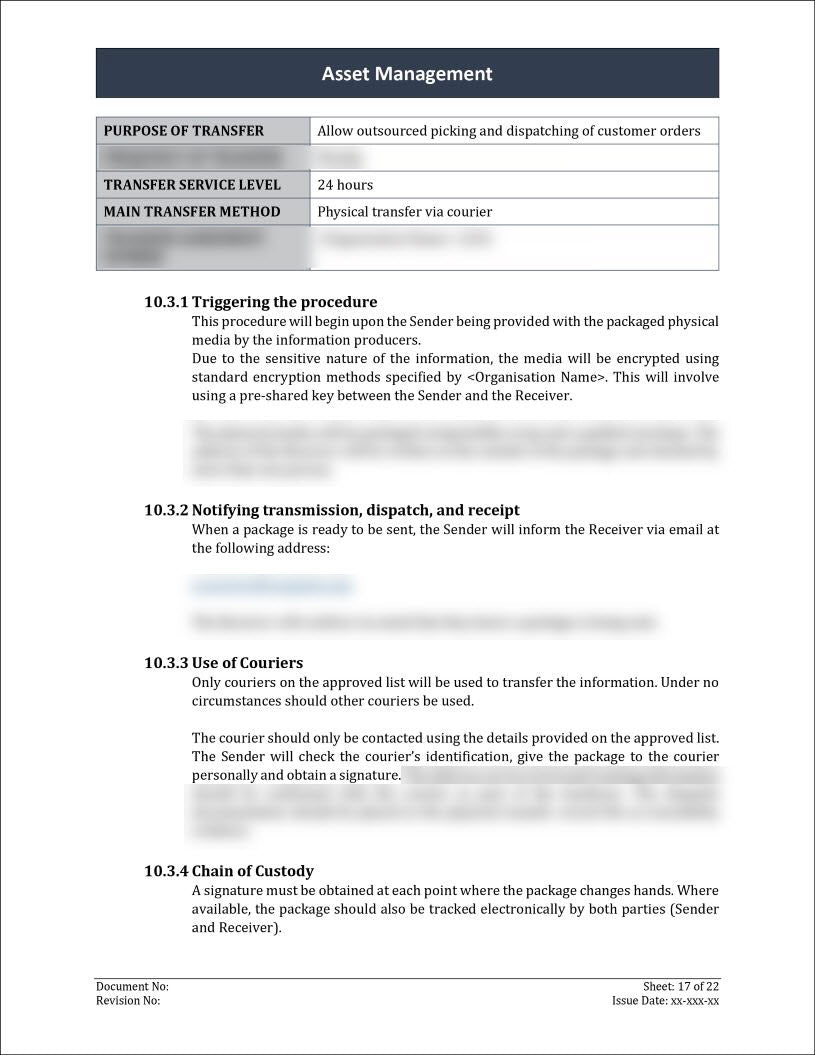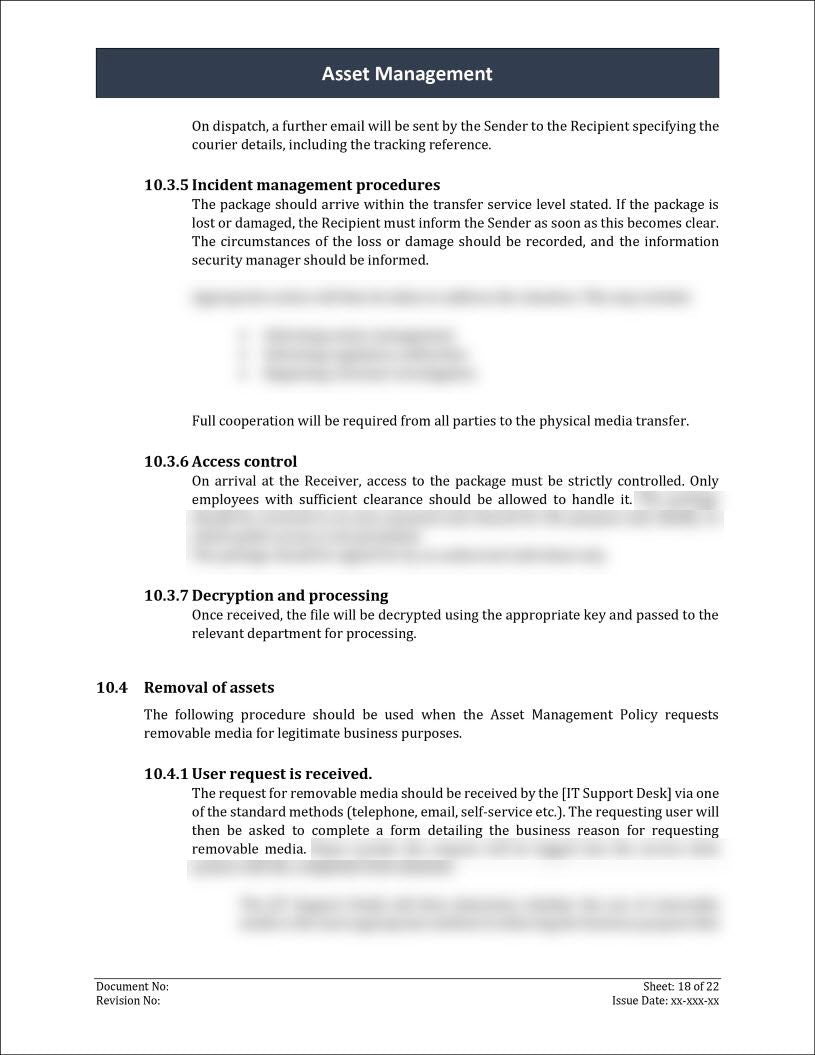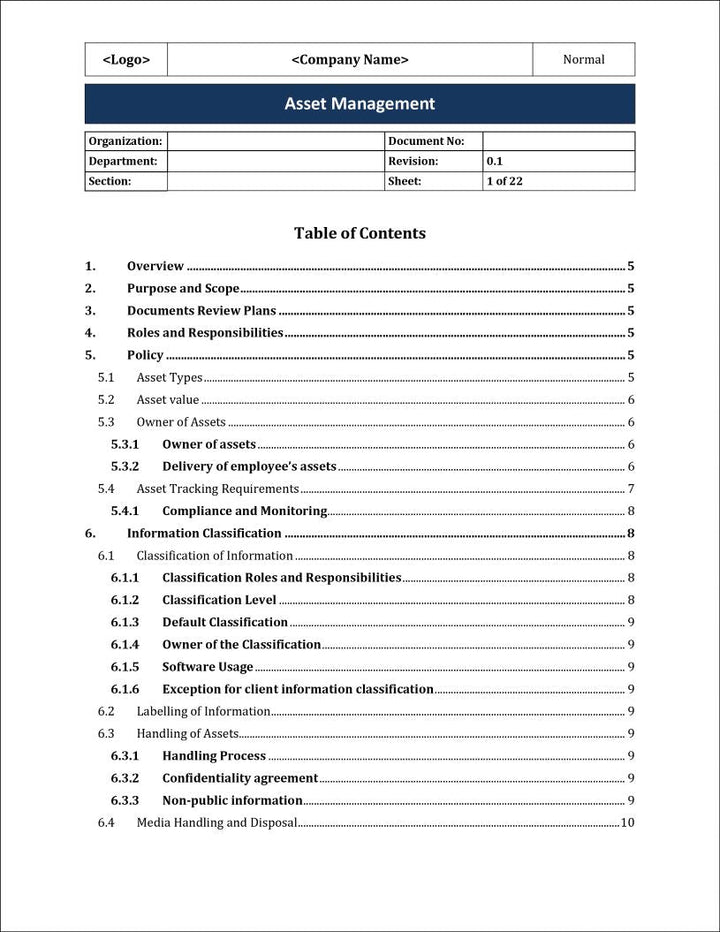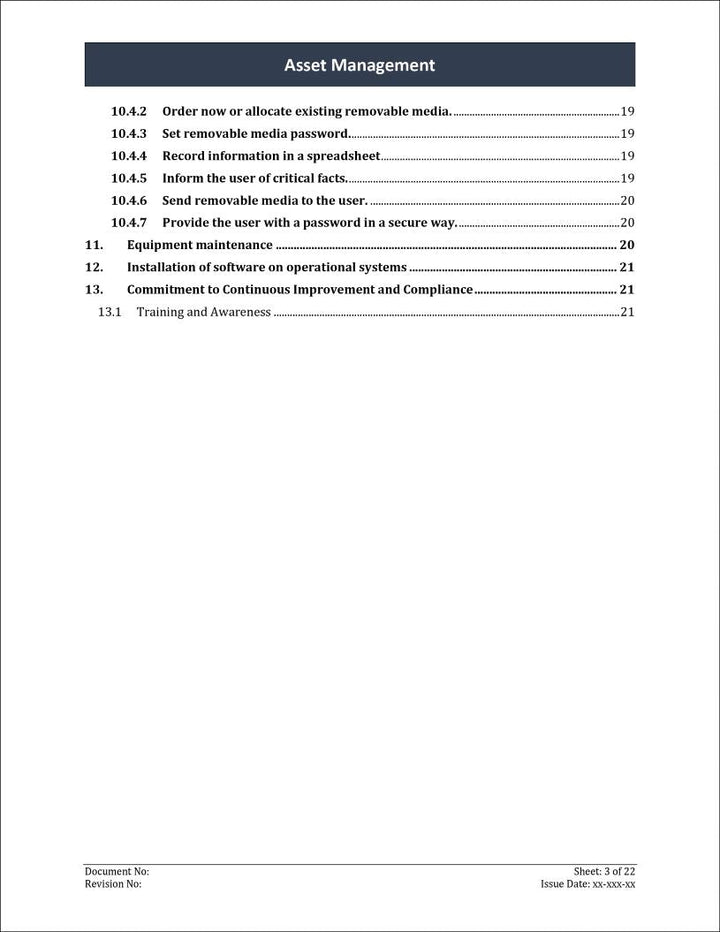Asset management policy refers to a set of guidelines, procedures, and best practices that an organization follows to effectively and efficiently manage its assets.
The assets can include tangible resources like infrastructure, equipment, and property, as well as intangible resources such as intellectual property, brand reputation, and customer relationships.
Format: MS Word
Features:
- Roles and Responsibilities: Clearly define and assign roles and responsibilities related to asset management, ensuring accountability and effective governance.
- Information Classification: Implement a classification system to categorize assets based on their importance, sensitivity, and criticality, facilitating appropriate protection measures.
- Inventory of Assets: Develop a comprehensive inventory of assets, including hardware, software, data, and facilities, to gain visibility and maintain control over all organizational assets.
Template Details:
The template includes the following details:
- Documents Review Plans
- Roles and Responsibilities
- Policy
- Information Classification
- Labelling of Information
- Handling of Assets
- Application of Policy
- Inventory of Assets
- Return of assets
- Storage media
- Disposal of media
- Information to be transferred.
- Removal of assets
- Equipment maintenance
- Installation of software on operational systems
- Commitment to Continuous Improvement and Compliance





